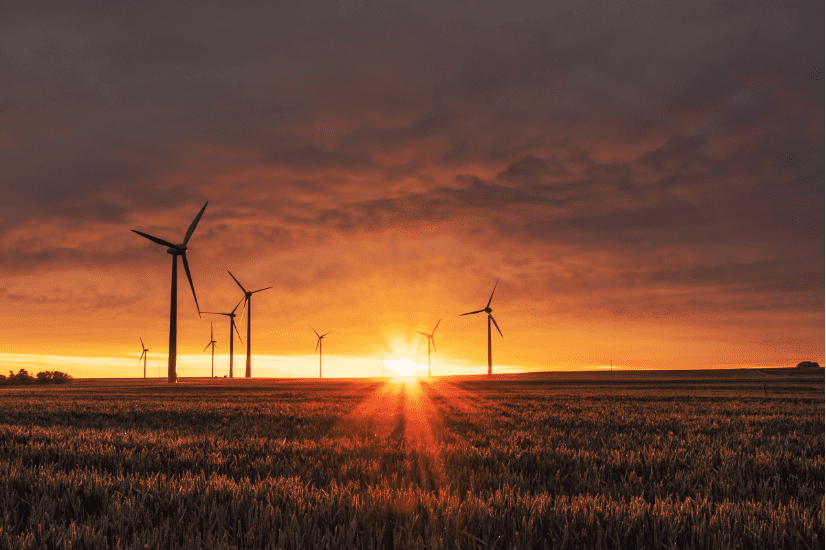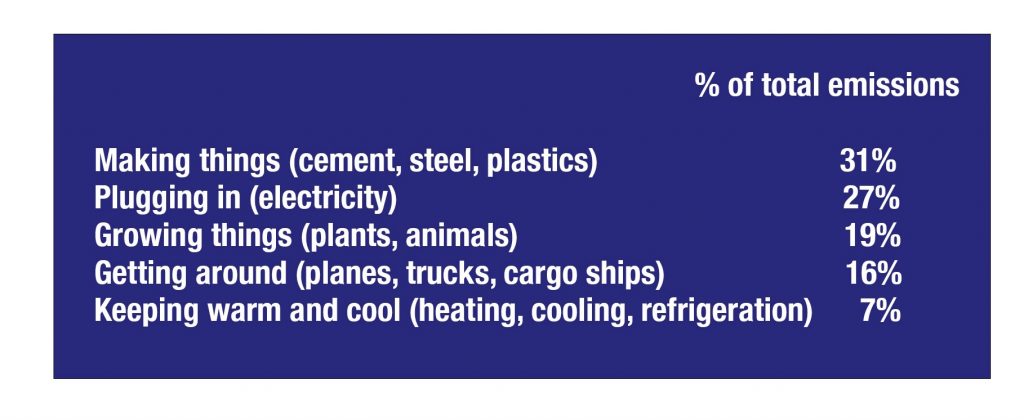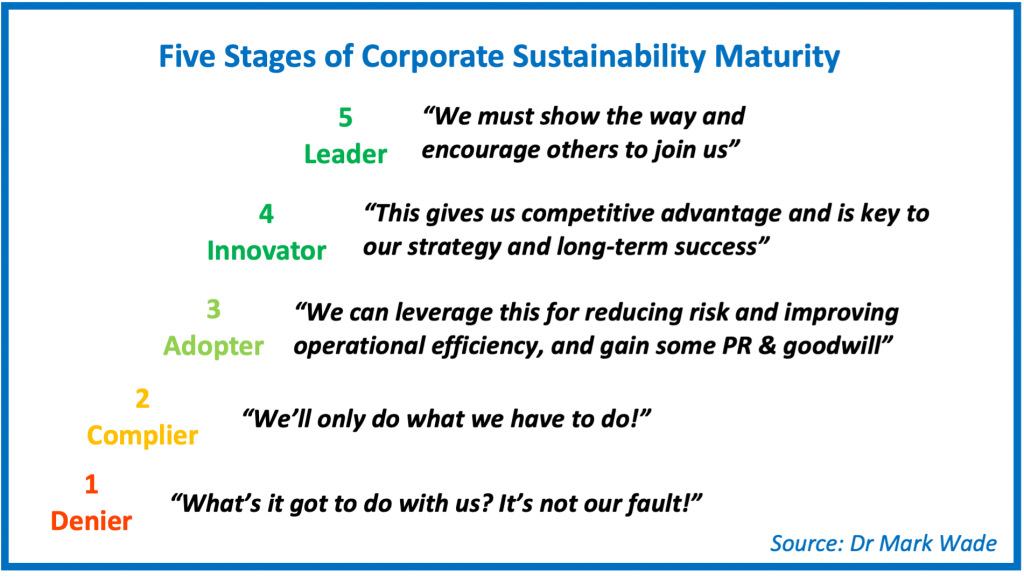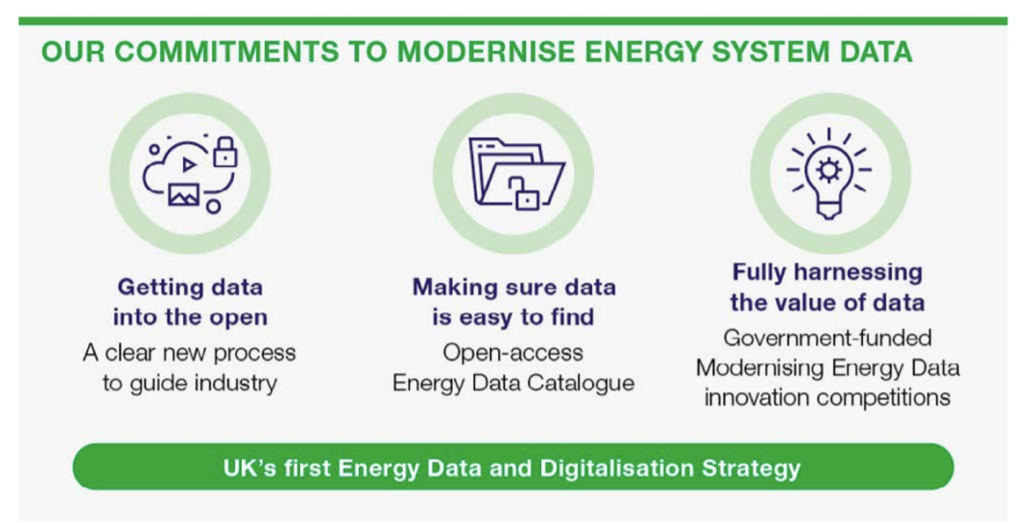- Call: 0203 427 3507
- Email: innovation@clustre.net

We must transition to a more sustainable way of life. The exhaustion of our planet’s resources and the climate emergency are an existential crisis. We cannot continue pumping carbon and other pollutants into our atmosphere and we cannot continue to increase our use of the planet’s resources in lockstep with our increasing population, which has more than trebled in David Attenborough’s lifetime.
We are already seeing the effects:
These are very difficult problems to solve, not least because they cannot be solved within national boundaries and our international institutions are relatively weak. However, the good news is we are starting to make real progress and there is a renewed sense of urgency.
Sustainability is firmly at the front of government policy around the globe and firmly on the board agenda of every major corporation. This combination of government regulation and business leadership is driving innovation that will, as Bill Gates argues in his new book, be pivotal in avoiding a climate disaster.
A core element of these initiatives is the Race to Zero. This is a global initiative to commit businesses, cities and regions to achieving net zero carbon emissions:
What is needed is nothing less than the reinvention of our industrialised economy. In order to reach net-zero by 2050, we must decarbonise the electricity grid worldwide and electrify everything that currently relies on carbon fuel. We must find ways to eliminate the carbon emissions generated by:

Innovation will play an absolutely critical role in achieving this transition. For example, in order to decarbonise the electricity grid, we need a breakthrough in battery technology to provide much higher energy storage density, at much lower cost, and with less reliance on scarce resources such as cobalt.
The Race to Zero is one half of the puzzle, the other is the transition to a circular economy. We can’t keep developing and growing our economies, and increasing production, while all the time using more and more resources.
We have to decouple growth from consumption and start to close the loop. This means designing for reuse from inception:
Billions of dollars will be spent in the coming years building carbon capture facilities to suck carbon from the atmosphere. However, we already have the most efficient method of carbon capture readily to hand. An acre of trees can capture around 10 tons of carbon dioxide per year and some, like the Empress Tree, can capture more than 100 tons.
Deforestation causes about 10 percent of global emissions. When trees are cut down they no longer capture carbon dioxide from the atmosphere and, through rotting or burning, often release what they have captured back into the air. Deforestation is robbing us of one of the most effective tools we have to mitigate the effect of our carbon emissions.
More broadly, biodiversity in general is affected by climate change, with negative consequences for human well-being. And biodiversity makes an important contribution to both climate change mitigation and adaptation. Conserving biodiversity is critical to addressing climate change.
A recent World Economic Forum report concluded that “First, businesses should do what they can to save the planet: reduce carbon emissions and nature loss, eliminate waste and switch to renewable energy sources. Nature positive transitions across infrastructure, energy, food, land and ocean use could lead to $10.1 trillion in annual business opportunities and 395 million jobs by 2030.”
International and national policy makers have a vital role to play in driving this transition, as do the leaders of our largest companies. And there are many great examples of innovation and progress:
The need to provide leadership in the transition to a sustainable economy is now front and centre for every company. There are four factors which are focusing minds in boardrooms around the globe on this issue:
We are transitioning to a sustainable economy, a revolution on the same scale as the industrial revolution itself, and one that provides the same scale of opportunities. For example:
If the economic upside of transitioning to sustainability is not sufficient motivation, then regulation will provide the necessary incentive. For example:
Investors are increasingly looking at environmental, social and governance (ESG) factors as a fundamental indicator of company risk and performance:
Customers and employees are increasingly factoring a company’s environmental commitments and track record into their decision making:
Sustainability expert and board advisor Dr Mark Wade categorises companies as moving through five stages of maturity in their response to this challenge.

It is the Innovators and Leaders, companies like Tesla, that are actively investing and collaborating in the development and application of new technologies we need to drive the transition to a sustainable economy.
Where is your company on this maturity curve and where would you like to be?
As Bill Gates says so clearly, in his book, How to Avoid a Climate Change Disaster, “We need to deploy the tools we already have, like solar and wind, faster and smarter, and we need to create and roll out breakthrough technologies that can take us the rest of the way” to zero carbon emissions.
He gives many examples of the areas where we need innovation, including finding ways to:
Governments and corporations are investing heavily in transforming the use of data to inform and manage their sustainability strategies. For example, a key element of the UK government’s £12bn plan for the Green Industrial Revolution is the use of operational data held by electricity companies.
The Energy Data Taskforce (commissioned by the Government, Ofgem and Innovate UK) highlights that moving towards a modern, digitised energy system is being hindered by poor quality, inaccurate or missing data, while valuable data is often restricted or hard to find. To address these issues, the government is funding energy data innovation competitions and launching an energy industry data strategy, as set out in the Department for Business, Energy & Industrial Strategy (BEIS) Whitepaper – Powering our net zero future

As Jonathan Cook of Zuhlke Engineering observes: the government is urging electricity companies to open up their operational data as part of the decarbonisation drive. The innovation competitions they are funding provide companies, like Zuhlke and others, an opportunity to participate and use their skills to accelerate achievement of national goals.
The transition to a more sustainable system of energy production, distribution and consumption will draw heavily on innovative use of AI and Intelligent Automation. This is illustrated by two case studies which show how companies are using these technologies to reduce energy consumption and wastage.
The first is the use of Intelligent Automation by Hovis, the bakers, to reduce food waste and energy consumption in their baking production:
The second is the use of machine learning to enable a large property developer and operator to better understand and predict the energy consumption of their buildings:
So, how should companies engage with this challenge and play their part in driving the innovation necessary for us all to achieve our goal of getting to net-zero emissions by 2050 and being half-way there by 2030?
The first step is to understand your own company’s carbon footprint and commit to your own, company specific, goal for carbon-neutrality. This has to be more than an arbitrary target. It has to be baked into your strategy and operational plans. This is why several leading companies are now appointing Chief Sustainability Officers to provide board level accountability for their sustainability goals.
The second step, having set your goals, is to work out how you will achieve them. Not just the immediate, low-hanging fruit, but also longer term, systemic changes to your business, including your customers, suppliers, products and distribution.
By way of guidance, in his book, Bill Gates sets out six “to-dos” for large companies:
Above all, get started. The transition we need to make here cannot be achieved entirely through incremental change. We need breakthrough innovation in so many areas. We need to transform almost every element of our economy over the next few decades. So, no matter where your business is focused, there are changes you can and must make.
The burning platform is the one we live on (planet earth). We face a stark choice. Invest in the transition to a sustainable economy or bear witness to the slow train wreck of our civilisation.
Business leaders around the world are taking up this challenge. We have been slow to respond but we are picking up the pace. The Race to Zero is underway.
The leaders in this race will be those who invest in the necessary innovation. It surely is a case of “Innovate or Die”.
Contributors to this article include:
Key sources for data and examples used in this article are: